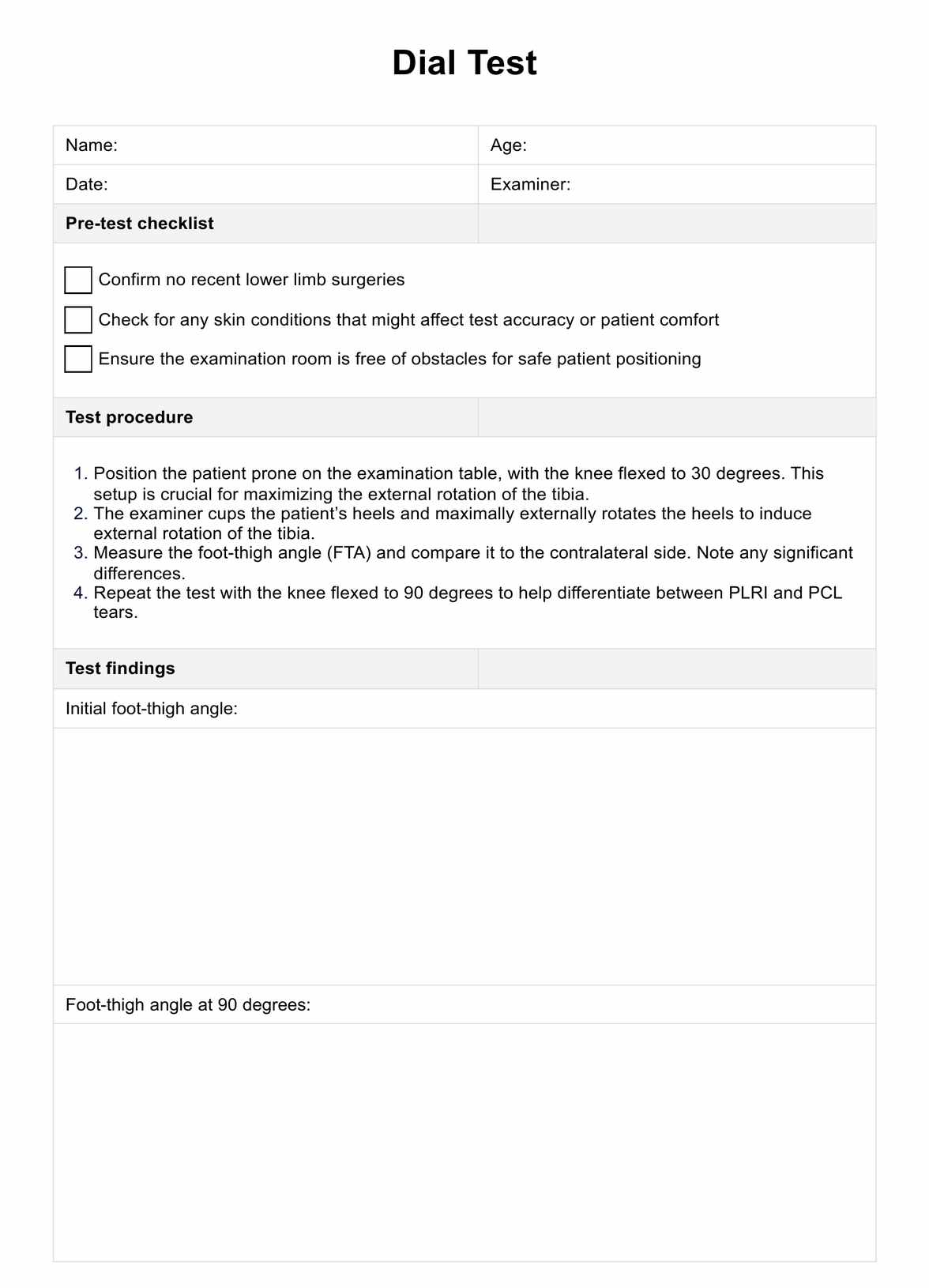The Dial Test is a clinical procedure used to assess posterolateral rotatory instability (PLRI) in the knee by measuring the external rotation of the tibia in comparison to the femur.

Dial Test
Explore the Dial Test template from Carepatron to accurately assess and document knee instability, enhancing diagnostic precision in clinical settings.
Dial Test Template
Commonly asked questions
The mechanism of the Dial Test involves maximally externally rotating the tibia at two different knee flexion angles (30 and 90 degrees) to identify instability in the posterolateral corner of the knee.
A positive Dial Test indicates excessive rotational mobility, which may suggest posterolateral rotatory instability (PLRI) or damage to structures like the posterior cruciate ligament (PCL), depending on the angles at which abnormalities are observed.
EHR and practice management software
Get started for free
*No credit card required
Free
$0/usd
Unlimited clients
Telehealth
1GB of storage
Client portal text
Automated billing and online payments











